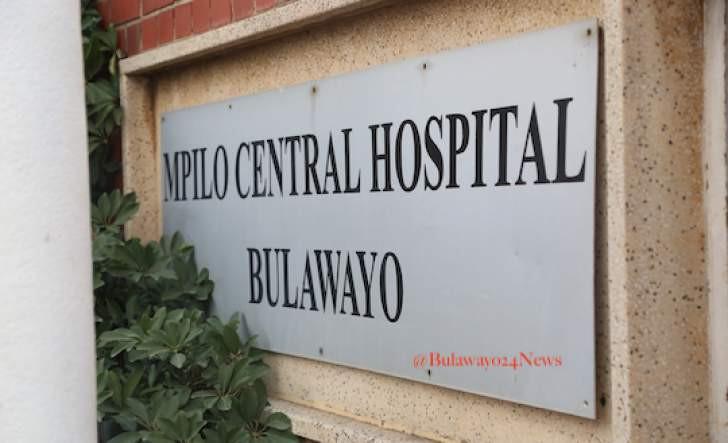News / National
Mpilo hospital records highest patient mortality rate in Zimbabwe
21 Dec 2024 at 15:33hrs |
0 Views

Mpilo Central Hospital has emerged as the referral hospital with the highest patient mortality rate in Zimbabwe, recording an 8.4% death rate between January and August 2024.
Data obtained by CITE shows the hospital admitted 18,367 patients during this period, with 17,316 discharged. Parirenyatwa Hospital in Harare followed closely with an 8% mortality rate, based on 19,437 admissions and 18,586 discharges.
Sally Mugabe Hospital in Harare, which handled the largest number of admissions (39,395) and discharges (36,757), reported a comparatively lower mortality rate of 7.4%.
Meanwhile, United Bulawayo Hospitals (UBH) recorded a 5% mortality rate from 16,230 admissions and 15,389 discharges. Chitungwiza Hospital posted the lowest death rate at 4%, with 15,817 discharges from 15,865 admissions.
Resource Constraints and Management Challenges
These statistics were shared during a Ministry of Health and Child Care year-end review and planning meeting held in Bulawayo from December 9 to 13, 2024.
Hospital insiders, speaking anonymously, blamed Mpilo's high mortality rate on dwindling resources and poor management.
Bulawayo Provincial Medical Director, Dr. Maphios Siamuchembu, referred inquiries to Mpilo's Chief Medical Officer (CMO), Dr. Dzvanga, who is currently on leave. Acting CMO and Clinical Director Professor Solwayo Ngwenya acknowledged the concerning figures:
"The figures are terrible, but we are taking measures to restore the hospital to its previous better standing."
Inequality in Healthcare Access
Zimbabwean general practitioner Dr. Themba Bulle, based in Australia, pointed to systemic inequalities in healthcare access as a contributing factor to the disparities in mortality rates.
"The rich and high-ranking government officials can afford private healthcare or seek treatment abroad in countries like the US, UK, India, and South Africa," Dr. Bulle said.
"Meanwhile, ordinary citizens face dire conditions in public hospitals like Mpilo and Parirenyatwa, which are notorious for shortages of medicines and healthcare staff."
Dr. Bulle also noted that many citizens never make it to public hospitals due to financial constraints or lack of ambulance services, leading to avoidable deaths at home.
He called for a universal healthcare system funded by the state:
"Under the principles of universality, Zimbabweans should demand a public health system that is free and accessible to all."
The Ministry of Health and Child Care has not yet announced concrete steps to address the disparities in mortality rates or the challenges facing public hospitals.
As public scrutiny intensifies, there is mounting pressure on the government to prioritize healthcare reforms, ensure equitable resource distribution, and improve the quality of medical care for all citizens.
Without urgent intervention, Mpilo's troubling statistics could serve as a stark indicator of the broader healthcare crisis gripping Zimbabwe.
Data obtained by CITE shows the hospital admitted 18,367 patients during this period, with 17,316 discharged. Parirenyatwa Hospital in Harare followed closely with an 8% mortality rate, based on 19,437 admissions and 18,586 discharges.
Sally Mugabe Hospital in Harare, which handled the largest number of admissions (39,395) and discharges (36,757), reported a comparatively lower mortality rate of 7.4%.
Meanwhile, United Bulawayo Hospitals (UBH) recorded a 5% mortality rate from 16,230 admissions and 15,389 discharges. Chitungwiza Hospital posted the lowest death rate at 4%, with 15,817 discharges from 15,865 admissions.
Resource Constraints and Management Challenges
These statistics were shared during a Ministry of Health and Child Care year-end review and planning meeting held in Bulawayo from December 9 to 13, 2024.
Hospital insiders, speaking anonymously, blamed Mpilo's high mortality rate on dwindling resources and poor management.
Bulawayo Provincial Medical Director, Dr. Maphios Siamuchembu, referred inquiries to Mpilo's Chief Medical Officer (CMO), Dr. Dzvanga, who is currently on leave. Acting CMO and Clinical Director Professor Solwayo Ngwenya acknowledged the concerning figures:
"The figures are terrible, but we are taking measures to restore the hospital to its previous better standing."
Inequality in Healthcare Access
Zimbabwean general practitioner Dr. Themba Bulle, based in Australia, pointed to systemic inequalities in healthcare access as a contributing factor to the disparities in mortality rates.
"The rich and high-ranking government officials can afford private healthcare or seek treatment abroad in countries like the US, UK, India, and South Africa," Dr. Bulle said.
"Meanwhile, ordinary citizens face dire conditions in public hospitals like Mpilo and Parirenyatwa, which are notorious for shortages of medicines and healthcare staff."
Dr. Bulle also noted that many citizens never make it to public hospitals due to financial constraints or lack of ambulance services, leading to avoidable deaths at home.
He called for a universal healthcare system funded by the state:
"Under the principles of universality, Zimbabweans should demand a public health system that is free and accessible to all."
The Ministry of Health and Child Care has not yet announced concrete steps to address the disparities in mortality rates or the challenges facing public hospitals.
As public scrutiny intensifies, there is mounting pressure on the government to prioritize healthcare reforms, ensure equitable resource distribution, and improve the quality of medical care for all citizens.
Without urgent intervention, Mpilo's troubling statistics could serve as a stark indicator of the broader healthcare crisis gripping Zimbabwe.
Source - pindula
Join the discussion
Loading comments…












